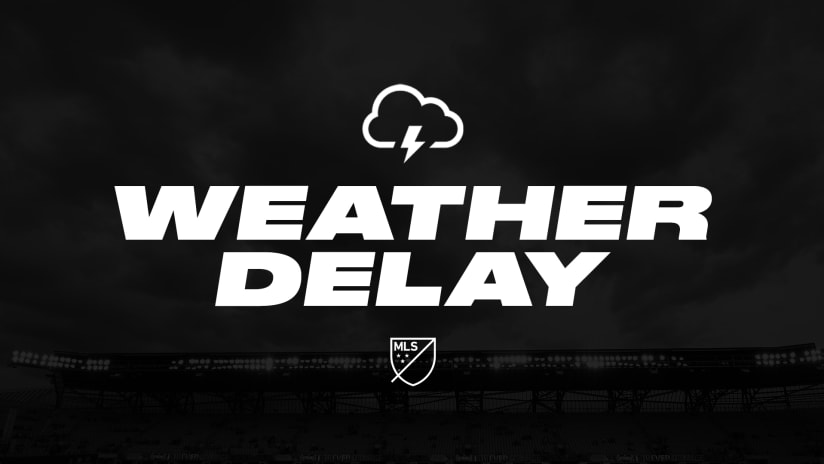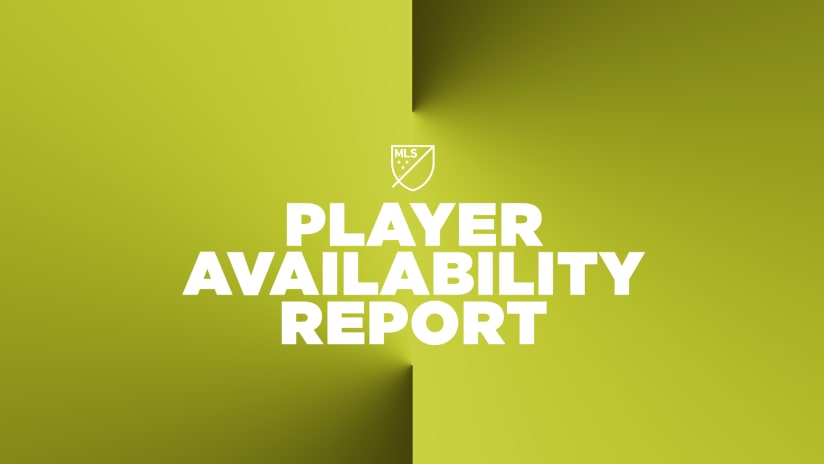Saturday’s match vs. in-state rivals LAFC at Levi’s Stadium (7:30 pm ET | Apple TV - Free) is one of the biggest events on the San Jose Earthquakes’ annual calendar, a special occasion at the NFL-sized venue that will host matches in both this summer’s Copa América and the 2026 World Cup. And with the Quakes lodged in last place in the MLS Western Conference via a painful 1W-8L-1D opening to their season, it’s accompanied by no small amount of frustration and concern.
No one in the league has conceded nearly as many goals as the 25 leaked by San Jose, and the need to create attacking danger with more regularity fueled the urgency to land Argentine playmaker Hernán López from Godoy Cruz on a club-record fee just before the close of the Primary Transfer Window last week. It adds up to palpable pressure on head coach Luchi Gonzalez and general manager Chris Leitch as this spotlight game looms.
“We’re not happy about our start, full stop. We need to start getting results right now,” Leitch told reporters last week. “As far as Luchi being on the hot seat, look, we’re all on the hot seat. We’re in pro sports. I’m on the hot seat. Everyone is. This is what we do. We’re in a results-oriented business. There’s no hiding behind that part.”
50th-anniversary season
Dispirited fans may take some solace in the recognition that this isn’t the first time the Quakes have found themselves in a tough spot – be it on the field or off, in MLS, the old NASL or hardscrabble environments in between like the Western Soccer Alliance of the 1980s.
The Quakes’ history dates back to 1974, a legacy that is being celebrated with a reunion and an array of other 50th-anniversary commemorations throughout the year. And it offers some perspective on the short-term stresses at hand. Just ask the guy who wrote the book on it.
“My generation, we grew up with the original team and we suffered through all the other various ups and downs and incarnations and births and deaths and everything else,” explained Gary Singh, the author of “The Unforgettable San Jose Earthquakes: Momentous Stories On & Off the Field,” a new book chronicling the rises, falls and relentless resilience of San Jose’s professional soccer team.
“The fact that we're all still here 50 years later, it's just an amazing journey. It really is a journey that this club has been through.”
There have been moments of euphoria, like when the freewheeling George Best lit up old Spartan Stadium as the beautiful game blazed into the North American mainstream, or the days of a baby-faced Landon Donovan inspiring two MLS Cup triumphs in three seasons. There have also been gutting setbacks, like the relocation of the first edition of the MLS Quakes to Houston in 2005 and the searing collapse of the NASL in 1984.
Origin story
What’s in a name? In this case, it’s been a persistent throughline across the decades, the Earthquakes moniker turning into a rallying point and a shared lineage in the face of upheaval – much like the Timbers, Sounders and Whitecaps further up the Pacific Coast, all ideas born in the same ‘70s time window and blessed with remarkable staying power since. It even outlasted the aversion among MLS’s founders to relics of what was then seen as a failed era: The MLS team began life as the Clash, only to embrace the past with a change back to Earthquakes in late 1999.
“The Quakes’ story is gloriously idiosyncratic and different,” explained Singh. “Players come and go, coaches come and go, owners come and go, general managers come and go, and in the US, even leagues have come and gone. But the clubs and the heritage and the history still continues, and that's same with Vancouver, Seattle and Portland.
“Nobody's claiming that it's 50 continuous years of the same franchise in a business sense or anything, but everything absolutely led to everything else. Every phenomenon has arisen due to the coming together of previous phenomena over the 50 years,” he added. “It really is a great way to show people that this is worth fighting for.”
Few could be better positioned to document this living history than Singh. A native son who fell in love with the sport attending the NASL Quakes’ games as a child, he later worked in stadium concessions as a San Jose State student so he could watch the San Francisco Bay Blackhawks, a pre-MLS side packed with future standouts in the new league and strong enough to qualify for the Concacaf Champions Cup.
He eventually found himself in the Quakes’ press box as a journalist, and continues to cover the wider San Jose scene as a columnist with the Metro Silicon Valley newspaper. “The Unforgettable San Jose Earthquakes” is his second book about the Quakes, in fact, following 2015’s “The San Jose Earthquakes: A Seismic Soccer Legacy,” both fueled by long hours of poring over San Jose Mercury News archives and sifting through old photos and other primary-source materials made accessible to him by the Quakes.
Part of the reason he’s returned to the well is the dovetailed manner in which the soccer team has woven itself into the fabric of a transformative epoch for the region at large.
Preserving legacy
Younger readers may not fully realize it, given the subsequent arrivals of the NHL’s Sharks, Bay FC of the NWSL and the San Francisco 49ers’ move to the South Bay when Levi’s opened in 2014 amid explosive growth across Silicon Valley and nearby locales. But the original Quakes were the first prominent pro sports team to consider this corner of the Bay Area as a permanent home, or even put it in their name, for that matter.
“The growth of the club in 50 years exactly parallels the growth of San Jose as a city for the last 50 years. Because it really was a backwater hick town before the ‘70s. Nobody knew it was going to grow into a real-sized city of any sort,” noted Singh. “That's why they were kind of laughed at when they started the club here, not in San Francisco or Oakland. And it parallels the growth of Silicon Valley, the tech industry and all these other things that have happened here. So that's why it's been a unique time to be alive to see all this.”
Saturday’s match, and every other MLS fixture played in the Bay Area since 2008, might never have happened without the persistent advocacy of fans who lobbied MLS and local scions for a rebirth after the move to Houston, which was instigated by the unsuccessful search for a suitable stadium of their own.
They also insisted that the expansion bid unfold as a full inheritance rather than a reset. The long road back finally reached another vital milestone in 2015, when their very own home, PayPal Park, opened its doors.
“When they moved to Houston,” said Singh, “and they brought the team back, the fans are who fought to keep the history and the statistics and the records intact, so that when the new team came back, it was a continuation. The fans fought to make that happen.
“The family that we have here is totally unique.”
Singh shakes his head and sighs when the persistent struggles of the contemporary Quakes are broached. He’s as hard-bitten as any long-suffering observer in the supporters’ section at PayPal Park, though he maintains Gonzalez’s squad is not as poor as their current record indicates. Dismal results on the field are part of the story, just not the whole thing, as long-suffering footy fanatics the world over would probably agree.
“Any other club in any other country, especially Europe or Latin America, there's people obsessively documenting the history of their club. This is what you do,” he deadpanned.
With so many other soccer communities across the United States and Canada writing their own narratives in real time – some newborn, some with just as deep a past as the Quakes – he hopes others might find some inspiration from his efforts.
“There’s a lot of new fans and a lot of people who don't know the history, and it's a great way to just capture the fact that history really does enrich the club,” he said. “If I can plant a seed and grow a tree that I won't be around to see the shade, maybe all these other clubs that are just starting will learn how to celebrate their own history, 20 years from now or 40 years from now.
“It's a great story. It's not to say we're the only ones doing it. The point is to show other clubs that 50 years from now, you can do this too. This sport will really will grow in a much better fashion if you do that.”














